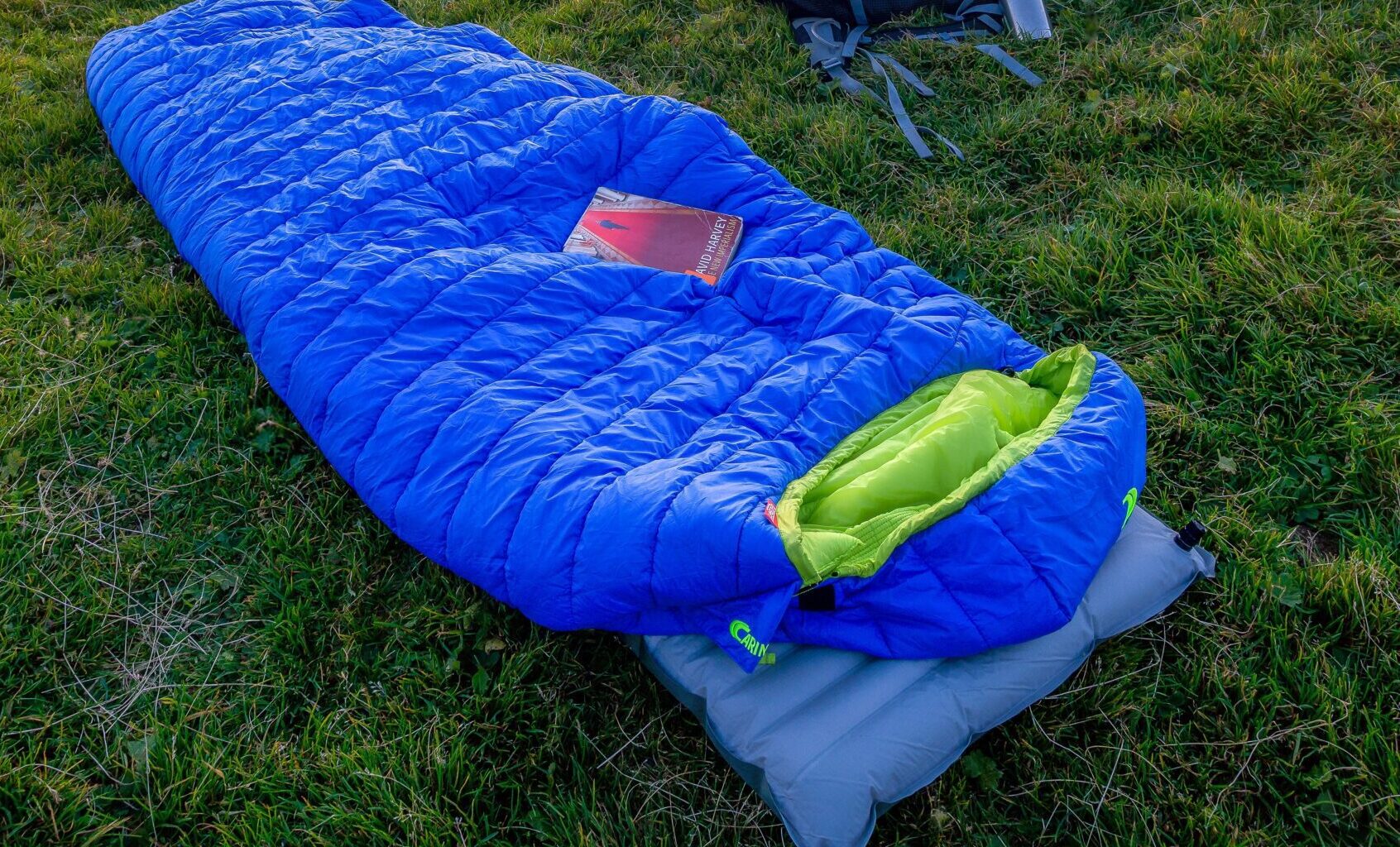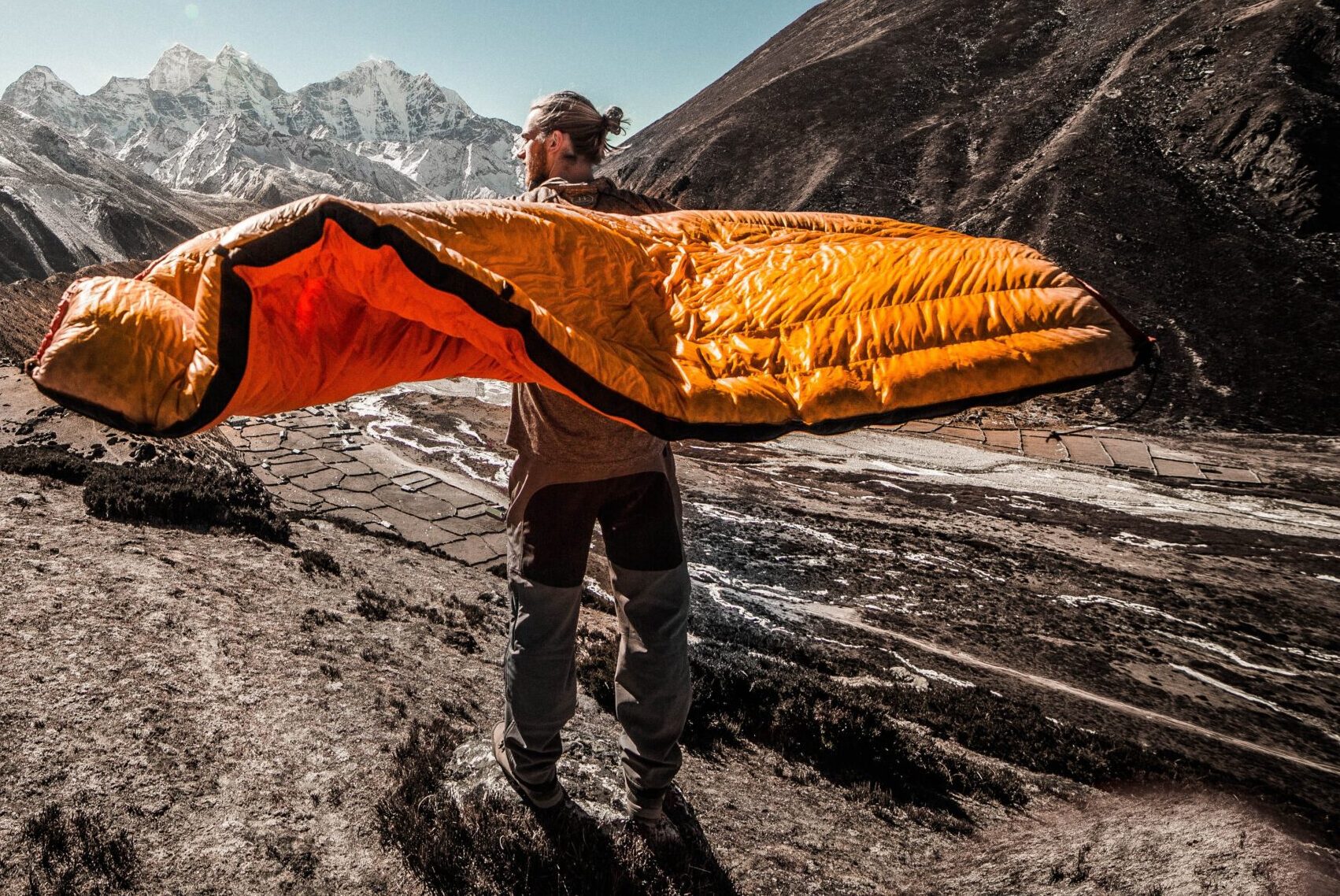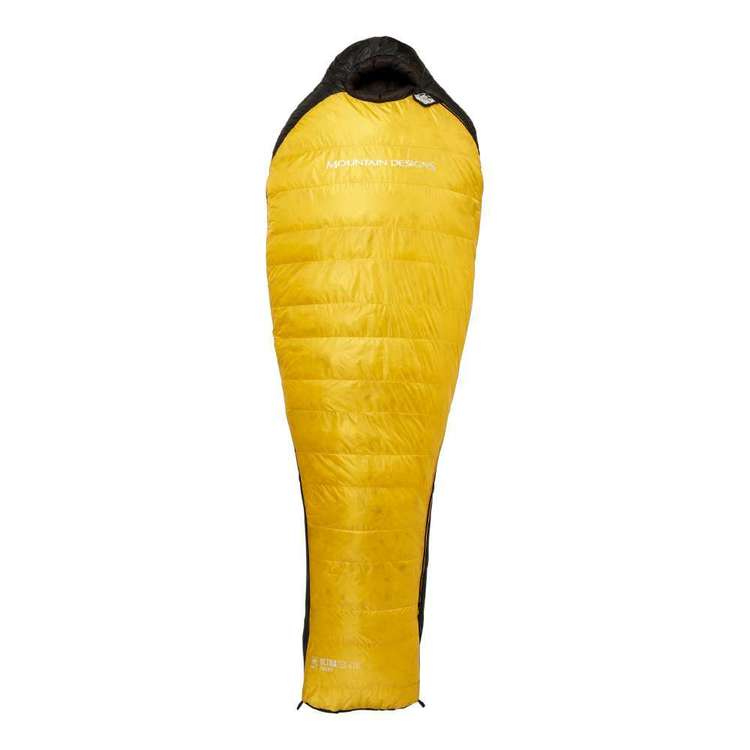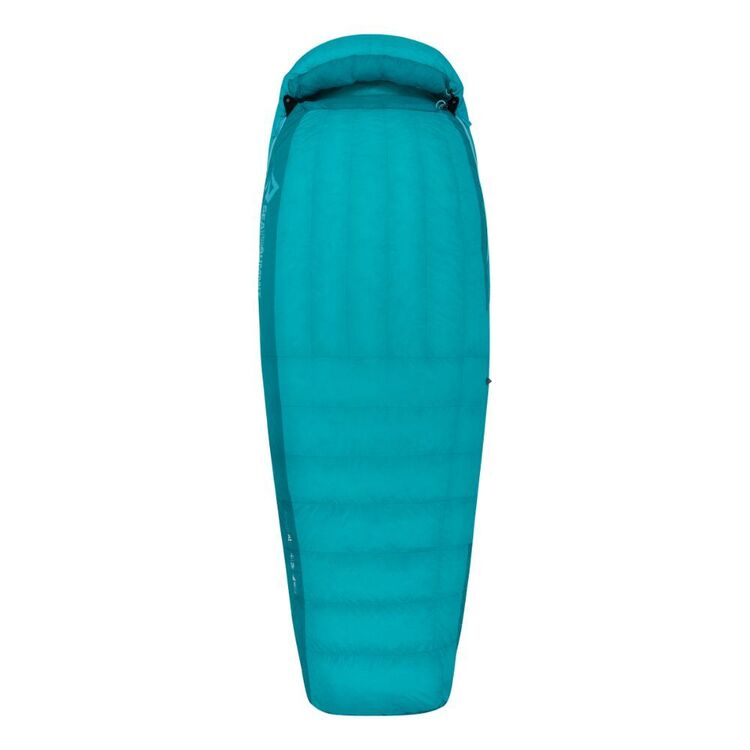Selecting the ideal sleeping bag is a crucial decision for any camper or hiker. It’s not just about warmth; it’s about comfort and suitability for your specific needs. Whether you’re an experienced outdoors person or just starting out, this guide will help you navigate the process of finding the right sleeping bag for your adventures. Let’s get down to business and make sure you sleep soundly under the stars on your next trip.
Ready to find your perfect sleeping bag? Here our favourite general sleeping bags, and our favourite hiking sleeping bags.
Disclaimer: Some of our posts may contain affiliate links that, at no additional cost to you, may earn us a small commission. Thank you for supporting WA Adventurer.
Sleeping bag comfort ratings explained
Comfort ratings for sleeping bags are a way to indicate the temperature range in which a sleeping bag is designed to keep you comfortably warm. These ratings are important because they help you choose the right sleeping bag for the specific conditions you’ll encounter during your hiking or camping trip.
Comfort ratings typically consist of three temperatures:
- Comfort Temperature: This is the lower limit at which an average person, in a relaxed position, can sleep comfortably without feeling too cold. In other words, it’s the temperature at which you can expect to have a restful night’s sleep without needing additional insulation, such as extra clothing or blankets.
- Limit Temperature: Sometimes referred to as the “lower limit,” this is the lowest temperature at which a standard adult can sleep comfortably in the sleeping bag. It’s important to note that the limit temperature is a lower threshold and doesn’t guarantee absolute comfort at this temperature. Instead, it indicates the point at which a person can endure the cold without risking hypothermia or discomfort.
- Extreme Temperature: This is the absolute minimum temperature at which the sleeping bag can be used, but it’s not recommended for regular use. Sleeping in a bag at or near the extreme temperature rating can be extremely uncomfortable and potentially dangerous, leading to issues like hypothermia.
It’s important to note that comfort ratings can vary between manufacturers and may not always align with your personal comfort preferences. Factors like your metabolism, the type of sleeping pad you use, and your clothing layers can all affect how comfortable you are in a particular sleeping bag at a given temperature.
When choosing a sleeping bag based on comfort ratings, it’s a good idea to consider the expected nighttime temperatures of your camping destination and choose a bag rated for temperatures slightly lower than what you anticipate encountering. This way, you can ensure you stay warm and comfortable throughout the night, even if the weather turns a bit colder than expected.

Ideal comfort rating for Western Australia
The ideal comfort rating for a sleeping bag in Western Australia will depend on the specific region and season in which you plan to camp or hike. Western Australia is a vast state with diverse climates, ranging from the arid desert regions of the interior to the temperate coastal areas.
Here are some general guidelines for comfort ratings based on Western Australia’s climate:
- Coastal Areas (e.g., Perth, Margaret River): In the milder coastal regions of Western Australia, especially during the summer months, a sleeping bag with a comfort rating of around 10 to 15 degrees Celsius should suffice. These areas typically have relatively mild nights, even in winter.
- Desert and Inland Regions (e.g., the Kimberley, Pilbara): If you’re planning to explore the inland and desert regions, where temperatures can drop significantly at night, you’ll want a sleeping bag with a lower comfort rating, closer to 0 degrees Celsius or even slightly lower. These areas can experience chilly nights, especially during the winter months.
- Transitional Seasons (Spring and Autumn): During transitional seasons, such as spring and autumn, it’s a good idea to have a sleeping bag with a comfort rating that covers a wide temperature range. Something around 5 to 10 degrees Celsius would be suitable for most areas in Western Australia during these seasons.
Keep in mind that microclimates can exist within different regions, and weather conditions can vary from year to year. It’s always a good idea to check the weather forecast for your specific camping destination and season to ensure you choose the right sleeping bag with an appropriate comfort rating. Additionally, consider factors like the elevation of your camping location and whether you’ll be near water, as these can also impact nighttime temperatures.
Sleeping bag shapes explained
Sleeping bags come in various shapes or designs to cater to the different needs and preferences of campers and outdoor enthusiasts.
Here are some of the most common sleeping bag shapes available:
Rectangular /Envelope Sleeping Bags:
- Shape: These are the most traditional and spacious sleeping bags, resembling a rectangular shape when laid flat. They offer plenty of room to move around and are often used for car camping, family camping, and indoor sleepovers.
- Comfort: Rectangular sleeping bags are very comfortable for those who like space to stretch their legs and arms.
- Weight and Packability: They tend to be bulkier and less packable than other shapes, making them less suitable for backpacking.
Mummy Sleeping Bags:
- Shape: Mummy bags are designed to taper toward the feet, mimicking the shape of a mummy’s sarcophagus. They are narrower at the feet and wider at the shoulders, with a hood that can be cinched around the head.
- Warmth: Mummy bags are known for their excellent warmth-to-weight ratio and thermal efficiency. The snug fit reduces the amount of air inside the bag, which helps retain body heat.
- Weight and Packability: They are lightweight and highly compressible, making them a popular choice for backpackers and cold-weather camping.
- Restricted Movement: The tapered design limits movement, which some people may find restrictive.
Semi-Rectangular or Barrel Sleeping Bags:
- Shape: These sleeping bags strike a balance between the roominess of rectangular bags and the snugness of mummy bags. They offer more space to move around than mummy bags but are narrower than rectangular ones.
- Versatility: Semi-rectangular bags are versatile and suitable for a range of camping conditions.
- Weight and Packability: They are generally bulkier than mummy bags but more compressible than rectangular ones.
Double Sleeping Bags:
- Shape: These are designed to accommodate two people, making them ideal for couples or families camping together.
- Size: Double sleeping bags are significantly wider than single bags and often have a rectangular shape.
- Comfort: They offer ample space for two people to sleep comfortably side by side.
- Weight and Packability: Due to their larger size, double sleeping bags can be heavy and less packable, making them more suitable for car camping.
Quilt Sleeping Bags:
- Shape: Quilt-style sleeping bags are essentially blankets with some attachments like straps or buttons to secure them around the body. They don’t have a hood or zippers.
- Versatility: Quilts are versatile and lightweight, as they can be used as blankets or worn as a poncho-style insulation layer.
- Warmth: They may not provide the same level of warmth as fully enclosed sleeping bags, but they are popular among ultralight backpackers.
Double-Wide Quilts:
- Similar to double sleeping bags, these quilts are designed for two people but offer more versatility in how they can be used. They can be used as a double-wide blanket or separated into two individual quilts.
Women’s-Specific Sleeping Bags:
- Shape: These sleeping bags are designed with a shape and insulation distribution that caters to the specific thermal needs and body shape of women.
- Features: Women’s sleeping bags often have extra insulation in critical areas, such as the feet and torso, to provide added warmth.
When choosing a sleeping bag shape, consider factors such as your camping style, the expected weather conditions, and your personal comfort preferences. Each shape has its advantages and is suited to different camping scenarios.

Down or synthetic sleeping bag filling: Which is better?
The choice between down and synthetic sleeping bag fillings is an important consideration when selecting a sleeping bag.
Down Filling
Down filling, often referred to simply as “down,” is a type of natural insulation used in the construction of various products, including sleeping bags, jackets, comforters, and pillows. Down is derived from the soft, fluffy under-feathers found beneath the tougher outer feathers of ducks and geese. It is prized for its exceptional insulating properties due to the structure of the down clusters.
Here are some key characteristics of down filling:
- Excellent Insulation: Down is highly effective at trapping warm air, creating a layer of insulation that helps retain body heat. This makes down one of the best natural insulators available.
- Lightweight: Down is incredibly lightweight for the amount of warmth it provides. This makes down-filled products, like down sleeping bags, suitable for activities where weight is a critical factor, such as backpacking and mountaineering.
- Loft: Down has a high loft, which means it can fluff up and create a lot of insulating airspace when it’s allowed to expand. The loftiness of down contributes to its warmth-retaining ability.
- Compressibility: Down can be compressed into a small volume, which makes it highly packable. This is particularly advantageous for travelers and outdoor enthusiasts who need to carry their gear in a backpack.
- Durability: High-quality down can be very durable and maintain its loft for many years if properly cared for.
Cons of Down Filling:
- Moisture Sensitivity: Down is highly susceptible to moisture. When wet, it loses its insulating properties and takes a long time to dry out. This can be a significant disadvantage in wet or humid conditions.
- Cost: High-quality down sleeping bags can be more expensive than their synthetic counterparts.
- Animal Ethics: Some individuals have ethical concerns regarding the sourcing of down feathers from ducks and geese, especially when it comes from sources that may not adhere to humane practices.
When choosing a down-filled product, you’ll often see a fill power rating, such as 600-fill or 800-fill. This rating indicates the quality and loftiness of the down, with higher numbers representing higher quality down. Products with higher fill power down are generally warmer and lighter for the same amount of filling.
Synthetic Filling
Synthetic filling, also known as synthetic insulation, is an artificial alternative to natural materials like down. It is used as insulation in various outdoor and cold-weather gear, including sleeping bags, jackets, and blankets. Unlike down, which is derived from natural sources, synthetic filling is man-made and composed of various synthetic fibers.
Here are some key characteristics of synthetic filling:
- Moisture Resistance: One of the significant advantages of synthetic insulation is its ability to retain warmth even when wet. Unlike down, which loses its insulating properties when it gets wet, synthetic insulation can still provide some level of warmth when damp. This makes synthetic-filled products suitable for damp or humid conditions.
- Affordability: Synthetic-filled products are often more budget-friendly than their down-filled counterparts. This affordability can make them a practical choice for individuals looking for cost-effective outdoor gear.
- Hypoallergenic: Synthetic insulation is hypoallergenic, making it a suitable choice for individuals with allergies or sensitivities to natural materials like down feathers.
- Drying Time: Synthetic insulation dries relatively quickly when it gets wet, which is advantageous in wet weather or if you need to wash your gear during a trip.
- Non-Animal Sourced: For those who have ethical or animal welfare concerns, synthetic insulation offers a cruelty-free alternative to down, as it does not involve the use of animal products.
However, synthetic insulation also has its limitations:
- Less Efficient Insulation: Synthetic insulation is generally not as efficient as down when it comes to trapping warm air. As a result, synthetic-filled products may need to be bulkier to achieve the same level of warmth as their down-filled counterparts.
- Heavier: Synthetic insulation is heavier than down for the same level of warmth. This can be a disadvantage for activities where minimising pack weight is crucial, such as backpacking and mountaineering.
- Less Packable: Synthetic insulation is less compressible than down, which means that synthetic-filled gear, like sleeping bags, can take up more space in your backpack.
In summary, the choice between down and synthetic sleeping bags depends on your specific needs and preferences. If you prioritise lightweight and warmth for cold, dry conditions, down is an excellent choice. On the other hand, if you expect wet or humid conditions and want an affordable and moisture-resistant option, synthetic sleeping bags are a practical choice. Consider the climate and type of outdoor activities you’ll be engaging in when making your decision.







1 thought on “What to look for when choosing a sleeping bag”